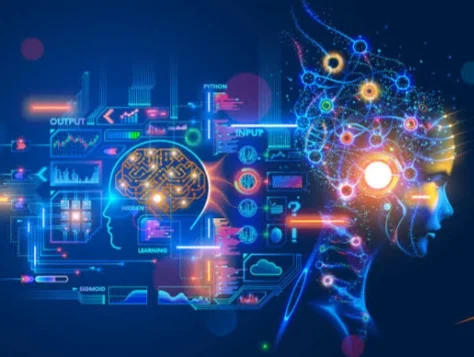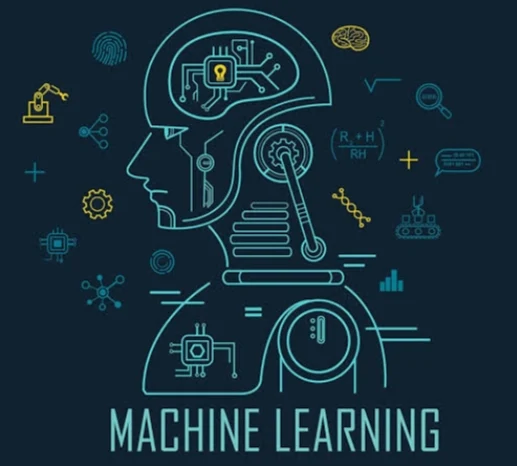Machine learning is a fascinating field of computer science that enables computers to learn and improve without being explicitly programmed.
It's essentially about teaching computers to learn from data, just like humans do. Imagine a computer that can analyze mountains of data and identify patterns, make predictions, and even take decisions on its own – that's the power of machine learning!
Here's how it works in a nutshell:
- Data Collection: The first step involves feeding the machine learning algorithm with a massive amount of data. This data can be anything from text and images to audio and sensor readings.
- Model Training: The algorithm then analyzes the data to identify patterns and relationships. It's like a student studying a textbook – the more data it consumes, the better it learns.
- Predictions and Decisions: Once trained, the model can be used to make predictions or decisions on new, unseen data. For example, a machine learning model trained on millions of customer reviews can predict whether a new user will like a particular product.
There are different types of machine learning algorithms, each suited for specific tasks:
- Supervised learning: In this type, the algorithm is trained on labeled data, where each data point has a corresponding label (e.g., a picture of a cat labeled as "cat"). The model learns to map the input data to the desired output (e.g., identifying a new picture as a cat).
- Unsupervised learning: Here, the data is unlabeled, and the algorithm needs to find patterns and relationships on its own. This can be used for tasks like clustering data points into groups based on similarities.
- Reinforcement learning: This type involves the algorithm interacting with an environment and learning through trial and error. The algorithm receives rewards for making good decisions and penalties for bad ones, gradually improving its performance.
Machine learning has revolutionized various industries, from healthcare and finance to manufacturing and entertainment.
Here are some real-world examples:
- Recommender systems: These systems recommend products, movies, or music to users based on their past preferences and behavior.
- Fraud detection: Machine learning algorithms can analyze financial transactions to identify fraudulent activities in real-time.
- Medical diagnosis: Machine learning can help doctors analyze medical images and data to diagnose diseases more accurately.
- Self-driving cars: These cars use machine learning algorithms to navigate roads, recognize objects, and make decisions in real-time.
As machine learning continues to evolve, it promises to further transform our lives in ways we can only imagine. So, the next time you see a computer doing something amazing, remember – it might just be the power of machine learning at work!
Machine learning: Supervised learning
Supervised learning is the powerhouse of many impressive real-world applications in AI! Let's delve deeper into its workings:
Think of it like learning with a tutor:
- Dataset: Your tutor provides you with examples, like pictures of animals labeled as their corresponding species. This labeled data is your training set.
- Model Training: You analyze the examples, identifying features and patterns that distinguish, say, a cat from a dog. This is where the machine learning algorithm does its magic, forming connections between input data and desired outputs.
- Predictions and Decisions: Once trained, you can take a new picture and apply what you learned. The model can now predict the animal in the picture with a high degree of accuracy.
What are the common tasks in supervised learning?
- Classification: Categorizing data points into predefined classes, like spam/not spam emails or handwritten digits.
- Regression: Predicting continuous values based on input data, like stock prices or weather forecasts.
What are the strengths and weaknesses of supervised learning?
Strengths:
- Highly accurate for well-defined problems: With high-quality labeled data, models can become incredibly accurate, even surpassing human performance in some tasks.
- Versatile: Applicable to a wide range of problems, from image recognition to sentiment analysis.
- Interpretable models: Some algorithms allow understanding how the model arrives at its predictions, providing valuable insights.
Weaknesses:
- Reliance on labeled data: Requires substantial, accurately labeled data, which can be expensive and time-consuming to collect.
- Overfitting: Can memorize the training data too closely, leading to poor performance on unseen data.
- Limited domain applicability: Models trained on specific data might not generalize well to other scenarios.
Examples of supervised learning in action:
- Email spam filters: Analyze email content to classify them as spam or not spam.
- Medical diagnosis: Analyze medical images and data to help doctors diagnose diseases.
- Self-driving cars: Predict the behavior of other vehicles and pedestrians to make safe driving decisions.

Machine learning: Unsupervised learning
Ah, unsupervised learning! Where the data throws a wild party and the algorithm figures out the dance moves on its own! It's a fascinating world where patterns emerge from the shadows, unlike supervised learning with its neatly labeled examples.
Here's how it works:
Imagine being dropped into a bustling marketplace:
- Unlabeled Data: All you hear are whispers, shouts, and murmurs – no clear labels or instructions. This is your unlabeled data, full of raw information but lacking predefined categories.
- Pattern Discovery: You start noticing groups of people with similar accents, gestures, or clothing. Unsupervised learning algorithms do the same, finding hidden patterns and structures within the data.
- Clustering and Dimensionality Reduction: You might group vendors selling fruits together, while musicians gather in another corner. Algorithms like clustering do this automatically, grouping data points based on similarities. Dimensionality reduction helps visualize complex data in lower dimensions for easier analysis.
What are the common tasks in unsupervised learning?
- Clustering: Identifying groups of similar data points, like customer segments or gene clusters.
- Dimensionality Reduction: Simplifying complex data for visualization and analysis.
- Anomaly Detection: Finding unusual data points that deviate from the norm, like fraudulent transactions or network intrusions.
What are the strengths and weaknesses of unsupervised learning?
Strengths:
- No need for labeled data: Works with raw, unlabeled data, saving time and resources on labeling.
- Uncovers hidden insights: Helps discover unexpected patterns and relationships that might be missed in supervised learning.
- Flexibility: Can be applied to various tasks without predefining specific outcomes.
Weaknesses:
- Interpretation challenges: Understanding the meaning of discovered patterns can be difficult.
- Subjectivity: Different algorithms can find different patterns in the same data, requiring careful evaluation.
- No guarantees: There's no guarantee that the discovered patterns are meaningful or useful.
Examples of unsupervised learning in action:
- Market segmentation: Grouping customers based on their shopping habits for targeted marketing.
- Fraud detection: Identifying unusual financial transactions that might indicate fraud.
- Recommendation systems: Suggesting products or content based on users' past interactions and similar user profiles.

Machine learning: Reinforcement learning
Ah, reinforcement learning! Where trial and error meets algorithmic magic, paving the path for learning through exploration and reward. Buckle up, because we're about to dive into the fascinating world of agents navigating dynamic environments in pursuit of that sweet, sweet reward!
Imagine you're a robot learning to walk. You stumble, you fall, you get back up – just like a reinforcement learning algorithm navigating an unknown environment.
Every action you take triggers a response from the environment, either a rewarding pat on the back (think reaching your goal) or a gentle nudge in the right direction (negative feedback for an inappropriate action).
Here's how it works:
- Agent and Environment: Our robot is the agent, interacting with the environment (the room, the obstacles, etc.).
- Actions and Rewards: The robot takes actions (stepping forward, turning left) and receives rewards (reaching the target) or penalties (bumping into a wall).
- Trial and Error: Through repeated attempts, the algorithm learns which actions lead to greater rewards and avoids those that bring penalties.
- Policy Improvement: With each iteration, the algorithm refines its decision-making policy, gradually optimizing its behavior to maximize long-term rewards.
What are the cool things about reinforcement learning?
- Adaptability: It's perfect for dynamic environments where rules are unclear or constantly changing.
- Generalization: Once trained, the agent can adapt its skills to similar environments without needing specific instructions.
- Scalability: Can handle complex tasks with numerous actions and state possibilities.
But it's not all sunshine and rainbows:
- Data Scarcity: Can be data-hungry, requiring careful design and efficient exploration strategies.
- Interpretation Challenges: Understanding why the agent makes certain decisions can be tricky.
- Convergence Issues: Sometimes, algorithms get stuck in suboptimal solutions, requiring careful parameter tuning.
Where can we see reinforcement learning in action?
- Robot control: Teaching robots to walk, run, and manipulate objects.
- Game playing: From Atari classics to complex Go matches, RL agents are conquering the gaming world.
- Resource management: Optimizing logistics, scheduling, and resource allocation in complex systems.
Next Article: AH-Artificial Human

